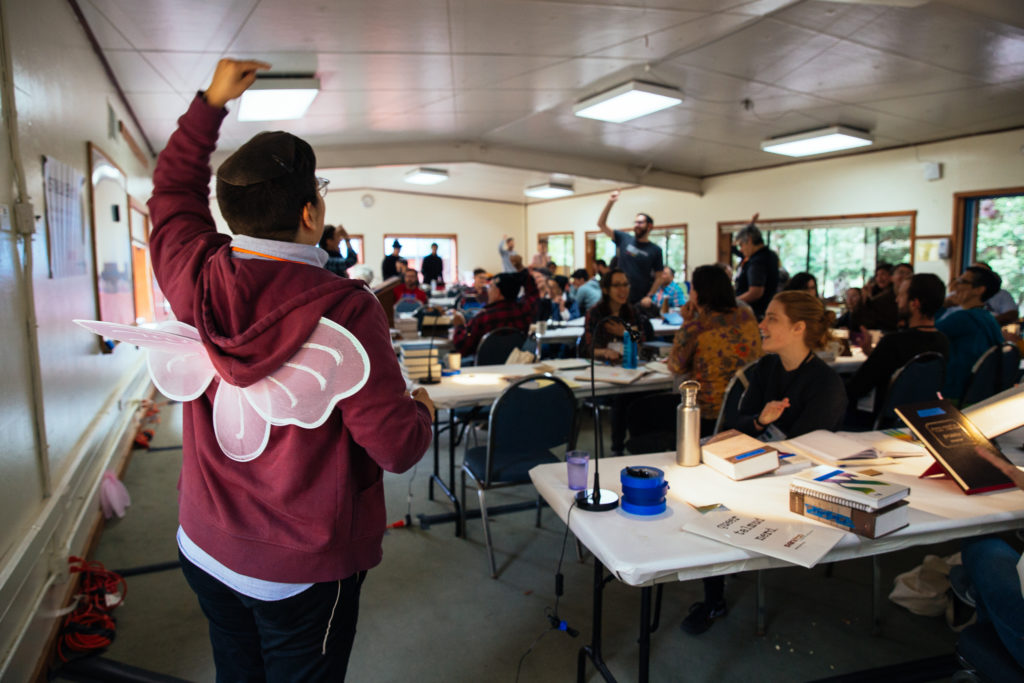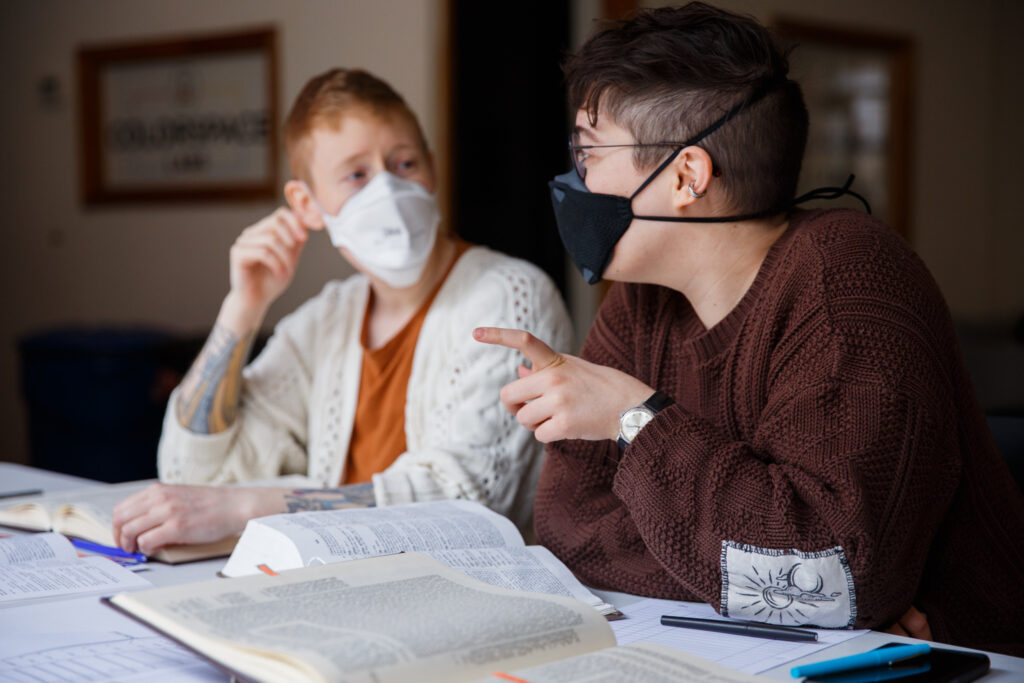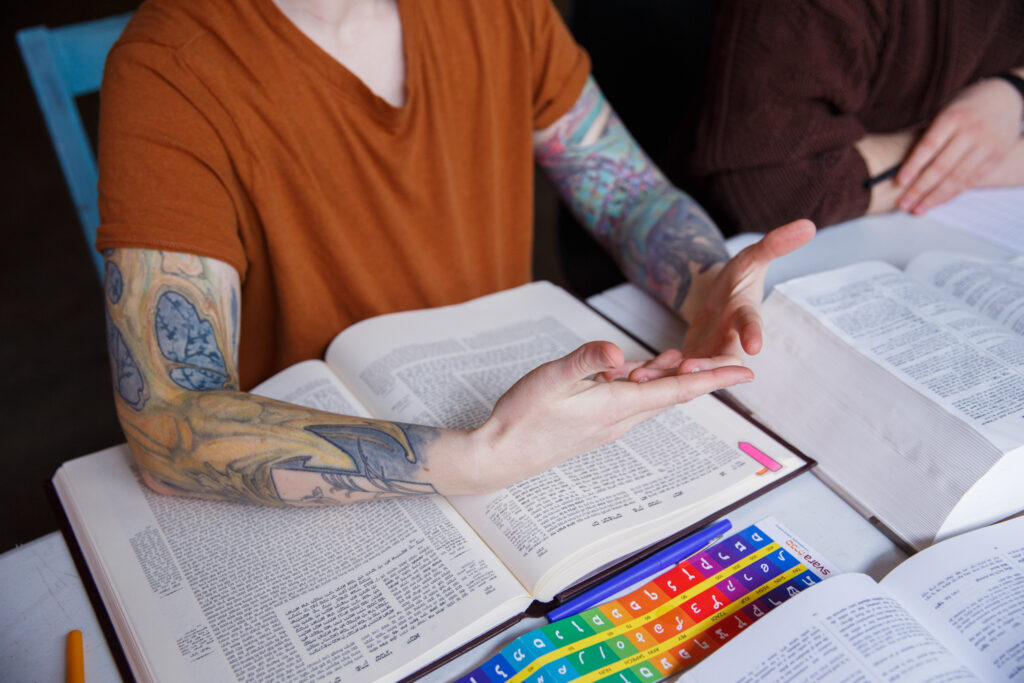Years before I entered a SVARA bet midrash, I learned a text from a friend, who learned it from a friend, who learned it from a friend, who learned it from Benay, which goes like this:
There was a king of flesh and blood who had two servants. He loved them with a complete love. He gave each of them a measure of wheat and a bundle of flax.
The wise servant – what did he do? He took the flax and wove it into a tablecloth. He took the wheat and made it into the finest flour. He sifted it, ground it, kneaded it, and baked it [into bread]. Then he arranged it on the table and spread the tablecloth over it. He left it until the time the king should return.
The foolish servant did nothing at all.
In time, the king came home and said, “My children, bring me what I gave to you.” One brought out the bread on the table covered with the tablecloth. The other brought out the pile of wheat with the bundle of flax on top.
Oh how embarrassing for him! Oh how shameful for him! You must know that the one that brought the table and the bread upon it was preferred.
When the Holy Blessed One gave the Torah to Israel, G!d gave it to them as wheat from which to produce fine bread, and as flax from which to produce cloth. (Seder Eliyahu Zuta, Ch. 2)
This text is a mashal, a parable, from a rabbinic text called Seder Eliyahu Zuta. In the parable, a royal ruler gives raw material to his servants, leaves for a while, and comes back eager to see what his servants made out of the material he gave them. For every mashal there is what’s referred to as a nimshal, the larger story, idea, or concept that is being expressed through the story itself. Here the nimshal is spelled out clearly: G!d is the Royal One, we are the servants, and, as the text says: “When the Holy Blessed One gave the Torah to Israel, G!d gave it to them as wheat from which to produce fine bread, and as flax from which to produce cloth.” And inside, the language is even more precise: לא נתנה להן אלא, “not it was given to them except,” i.e., it was only given to them for this specific purpose.
G!d gives us the Torah as material from which to create, to make, to shape, to repurpose it into something differently beautiful that is materially transformed. Without creative processes, without sifting, and grinding, and kneading and baking—without entirely changing the character of the material while also preserving its essence, Torah would (G!d-forbid) be like a basket of wheat growing mold.
This is the Torah of “Option 3,” of transforming the material from the meta-stories we’ve inherited into something that is both liveable and unrecognizable, as Benay teaches. For those who feel doubtful about the rabbinic project as one of radical transformation, look no further than Seder Eliyahu Zuta.
When I first heard this parable through the underground queer channels of Google Docs that many of us used to use “back in the day” (okay, like eight years ago) to find rad texts to learn, it felt like a truth I’d always known—like a secret about our tradition that I had felt but had no words for until this little text came along. I had been taught that Torah was powerful, that it was beautiful, that it was demanding, challenging, but not that it was material—flax and wheat ready to be woven and baked into something new.
This sense that Torah can be shaped and cultivated by us is, I think, about trust in ourselves, in our inherent wisdom, and in the goodness of our creative capacity. If we see ourselves truly as the inheritors of the rabbinic legacy, we are the bread-makers, not simply the guardians of a pile of flax. I can feel this sense of trust deepening whenever I learn this story with folks. It is thrilling to imagine that the rabbis believe so deeply in their own ability to transform—and in that way preserve—Torah. And it’s just as thrilling to imagine that they believed that we should do it, too.
I’ve felt close to the beauty of this text for a while, but recently I have been sitting with some of the pain and grief that sits underneath this text that I hold as a teacher. After learning this text together, one SVARA-nik (who was in rabbinical school at the time and is now a rabbi) said to me: “But I love the bread I’ve baked. So, what, my students make that into…toast?” I felt the grief in her voice, and I knew immediately what she meant. I have been weaving my tablecloth and baking bread for a decade, and I have fallen in love with the Torah that I’ve learned. I’ve found texts that have transformed me, that make a tablecloth that is just the right colors, and I’ve perfected my bread recipe to find just the right bread that I love. I really do love the bread I’ve baked.
To take flax and build new worlds out of it, all for the magnification and celebration of Sacredness in this world, is what the holy task of being a “player” is all about. But being a teacher is not about being a player, it is about helping others become players themselves. Being a teacher in this mesorah, in this chain of transmission, is not about creating a beautiful cloth and delicious bread for your students and sitting them down for a meal of the gorgeous food you’ve prepared for them. It is about teaching them how to bake by baking together—and of course, learning new rad baking skills along the way. If our goal as players is to become the bread-makers and the weavers, our goal as teachers is to teach people how to bake whatever it is they want or need, whether it’s a sourdough loaf, a bagel, a gluten-free scone, or something we can’t even imagine until it’s sitting on the table in front of us.
I don’t know what your bread will taste like. I don’t know how your tablecloth will feel or whether it will have colors that match mine. I don’t know what your favorite bread texture is, or what the right amount of sifting and grinding is for you that will help you get it just right. But as we head into the bet midrash this upcoming season, I hope that we all find the tools we need to help bring nourishing, sustaining, beautifully transformed Torah into the world, and that we help each other trust in whatever it is that we’re creating.







